The Gigabyte P35X v3 Review: Slim GTX980M Gaming Laptop
by Brett Howse on April 23, 2015 8:00 AM ESTSystem Performance
Gigabyte has provided the lowest speed processor that they have available in the P35X series, but it is no slouch. As a 47 watt CPU, the quad-core Core i7-4710HQ has a base frequency of 2.5 GHz and turbo of 3.5 GHz and assuming the P35X’s cooling system is up to the task, it should be able to keep the frequencies up during most scenarios. They do also offer the i7-4720HQ as an option, which bumps both frequencies another 100 MHz, and the i7-4860HQ which is 2.4-3.6 GHz and includes Iris Pro graphics.
To analyze and contrast system performance among various notebooks, we turn to our standard benchmarking suites. I have sampled several devices to compare against, including the Clevo P750ZM which has a 4K display and a desktop CPU inside, and several other gaming systems. Additionally, I have included some more typical workstation devices just for comparison. If you would like to see how the P35X compares to any other device we have reviewed, please check out our Bench section.
PCMark
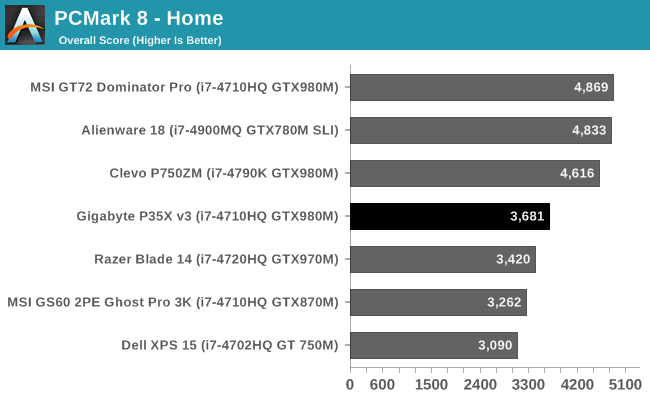
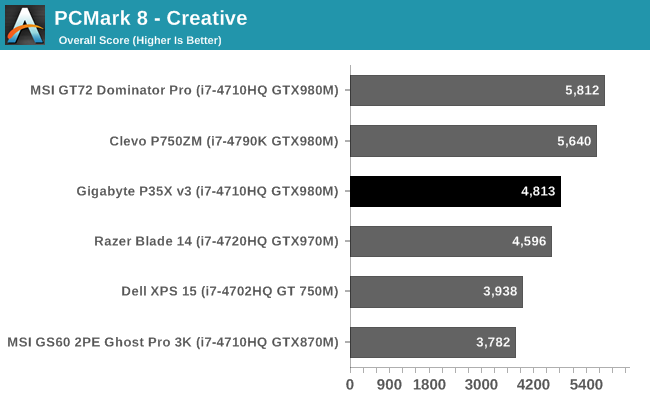
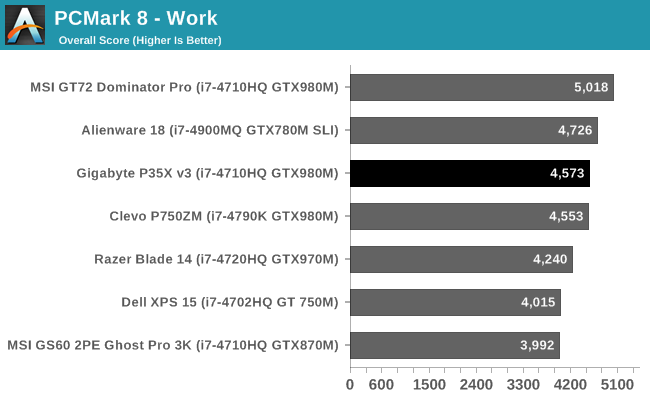
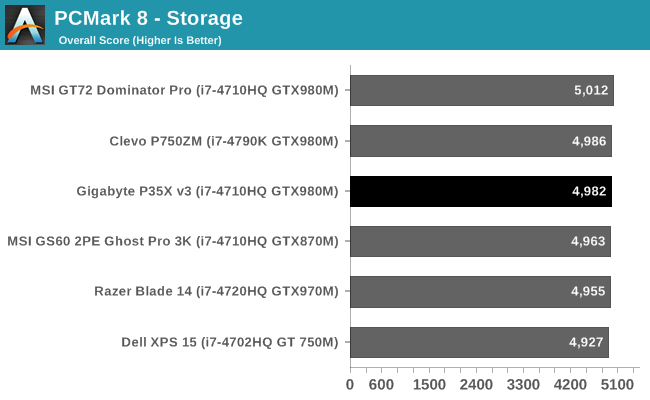
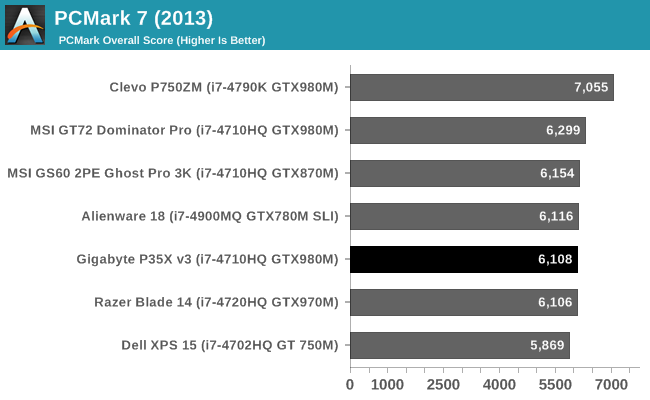
PCMark performs several tasks depending on which mode is being run, which attempt to represent real-world use cases. The nature of the workloads has several burst loads and several sustained loads. All aspects of the system are taken into account, including CPU performance, some GPU performance, storage performance, and even display resolution. That is why devices with desktop class components like the Clevo P750ZM can fall behind much slower CPUs in this test, because the Clevo comes with a 4K display.
The Gigabyte P35X fares very well here, even though the higher than normal display resolution does pull its scores back somewhat compared to the 1080p that is common in this range of devices. Somewhat non surprising is the RAID 0 configuration of the two SSDs does not really improve the PCMark Storage results, although maximum transfer rates would be increased.
Cinebench
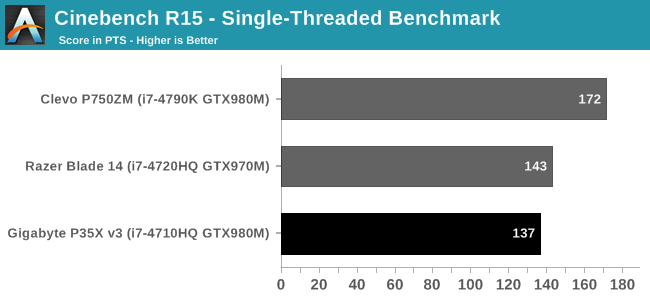
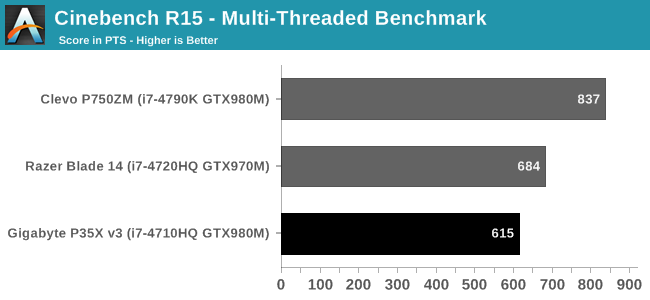
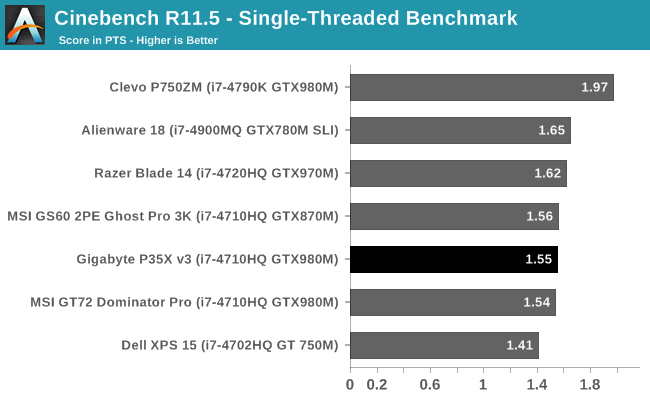
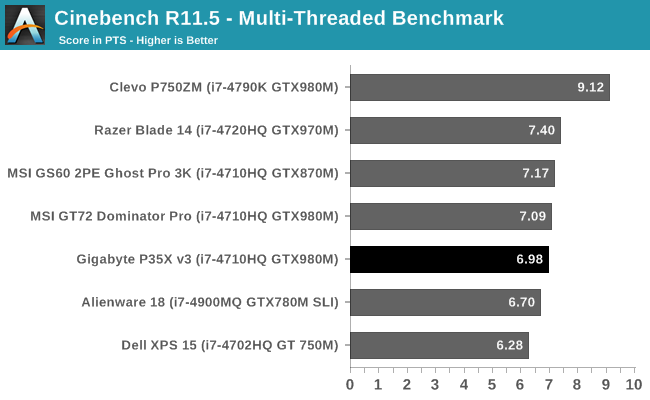
As a test of CPU based rendering, Cinebench loves IPC and frequencies. The single-threaded performance of the i7-4710HQ processor is quite good with the maximum turbo frequency available of 3.5 GHz, although I did not see much more than 3.3 GHz during the run. Mult-threaded scores are drastically increased over Ultrabook class parts due to the higher TDP parts having four cores plus hyperthreading.
x264
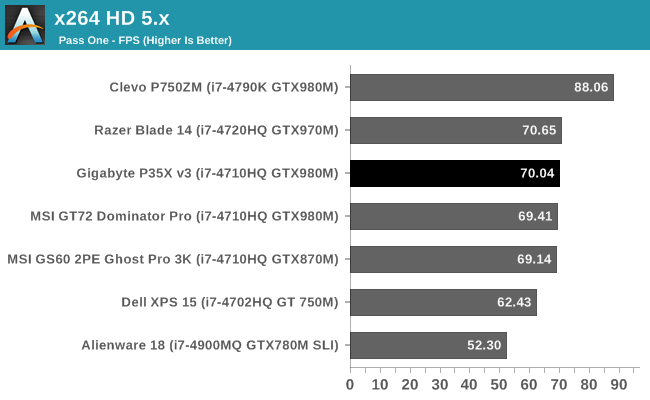
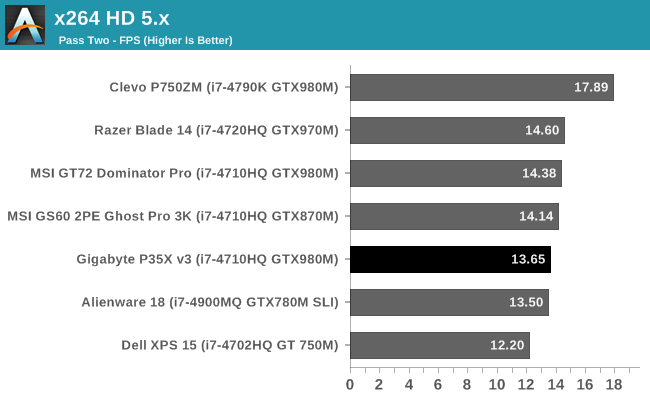
The x264 benchmark is another one that craves cores and high frequencies, and the P35X scores quite well in these sorts of scenarios. It of course cannot compete with the desktop part in the Clevo P750ZM, but that device cannot compete on weight either.
Javascript Performance

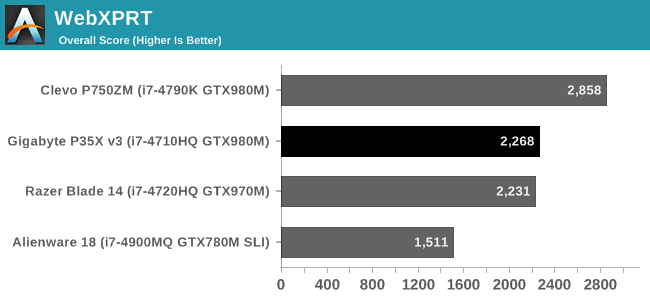
None of the high performance systems will struggle with Javascript, and all of them show performance levels significantly higher than Ultrabooks and the like.
TouchXPRT 2014

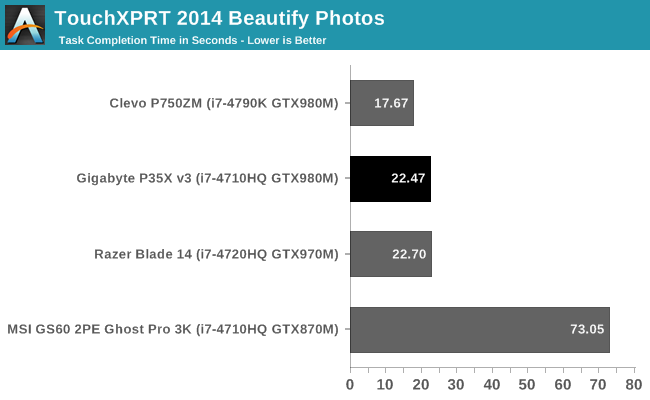
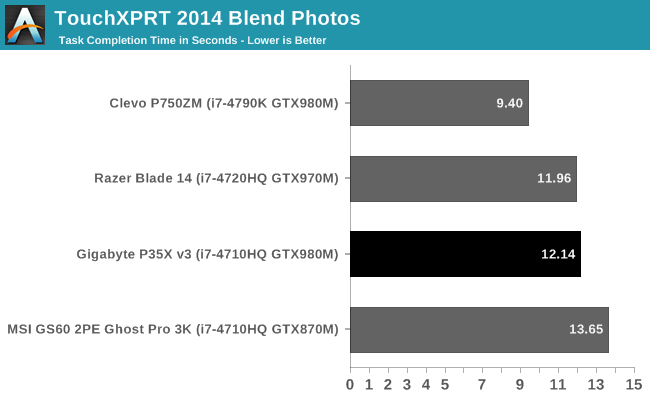

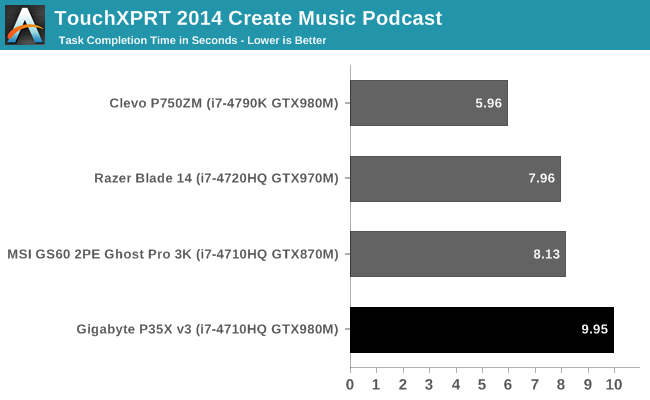
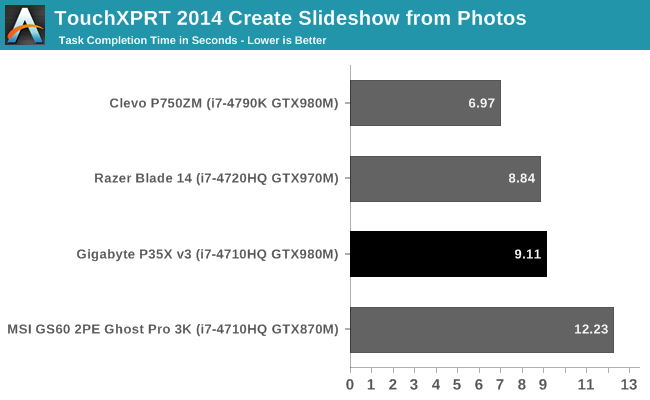
This is a benchmark which has very small short workloads, and the P35X handles this test with ease. It slots in exactly where you would expect, between the i7-4702HQ and i7-4720HQ models of the Razer Blade.
System Performance Conclusion
Overall, the P35X performs about where you would expect. System performance is quite good for any sort of CPU bound workload. I would question the use of RAID 0 for the SSDs, rather than just a single larger drive, but it does not harm performance. The base system’s 256 GB of SSD storage is not really a lot to work with, so games will likely end up on the much slower 7200rpm disk drive. Absolute performance will be up slightly, but it does not affect real world use very much.
The CPU is plenty powerful, and those that need a bit more grunt can check out the optional processors. With 16 GB of memory, the P35X should handle most desktop workloads with aplomb.
Those that buy this system though are likely more interested in gaming performance, so let’s move to that now.










55 Comments
View All Comments
xilience - Thursday, April 23, 2015 - link
Any thoughts for why there is such a large difference in FPS in GRID:Autosport versus the Clevo?SpaceRanger - Thursday, April 23, 2015 - link
From the looks of it.. The Clevo is sporting a true 4790k(84w), while the Gigabyte's using a 4710HQ(47w) CPU. Apples and Oranges comparison in my eyes.nerd1 - Thursday, April 23, 2015 - link
It's as slow as razer blade with 970M - which means the whole system throttles a lot under pressure, even compared to razer blade (which is not well known for great cooling)Brett Howse - Thursday, April 23, 2015 - link
That's not what it means at all. It means that GRID Autosport is more CPU bound. The Clevo with the desktop CPU is way ahead. Razer has a faster CPU and slower GPU, but it's still behind.xKrNMBoYx - Friday, April 24, 2015 - link
Okay so some of the benchmarks include the MSI GT72 Dominator Pro with basically the same CPU and GPU. Yet all those benchmarks show the P35X beating the GT72 even though they are similar. So if a thin P35X can beat a more roomy GT72 with better cooling how is the P35X suffering from throttling issues?The next thing to come to mind logically would be the comparison of the CPUs as the Clevo is using a full 4790K that can run all cores on 4GHz and then the 4720HQ (Razerblade) which is better than the 4710HQ (P34X). Every benchmark here shows the 980M in the P35X beating the 970M by at least ~10FPS and you look at one benchmark where the difference is less than 10FPS and say they perform the same?
Frumious1 - Friday, April 24, 2015 - link
Different drivers would be the reason. GT72 was tested when GTX 980M was practically brand new. NVIDIA had several driver updates that provided substantial increases to performance since last October/November. Too bad AnandTech can't go back and retest some of their previous laptops and update performance with the latest drivers.xKrNMBoYx - Monday, April 27, 2015 - link
You're right. I was hoping/expecting they did those tests over again. The lastest driver update did boost the desktop Maxwell GPU performances. Seeing that I do have a GT72 Pro with a 980M I should be able to try running a few of these game benchmarks to see if I get similar numbers.nerd1 - Thursday, April 23, 2015 - link
This review looks extremely shallow - it almost skipped over its main concern (thermal). A single 3D game for thermal testing? Seriously? Since when Anandtech review became like this?hfm - Thursday, April 23, 2015 - link
At least the system cooling solution noise was mentioned, which sounds like a deal-breaker in my eyes.nerd1 - Thursday, April 23, 2015 - link
Games rarely utilize CPU at all, and many games do not push GPU either. Most other hardware sites uses synthetic tests designed to really push the hardware, and then tests a number of demanding games too.And face it, you cannot cram x80M GPU and quadcore CPU inside 20mm thin body and expect it to run cool and silent. Even 17 inch gaming rigs sometimes throttle.